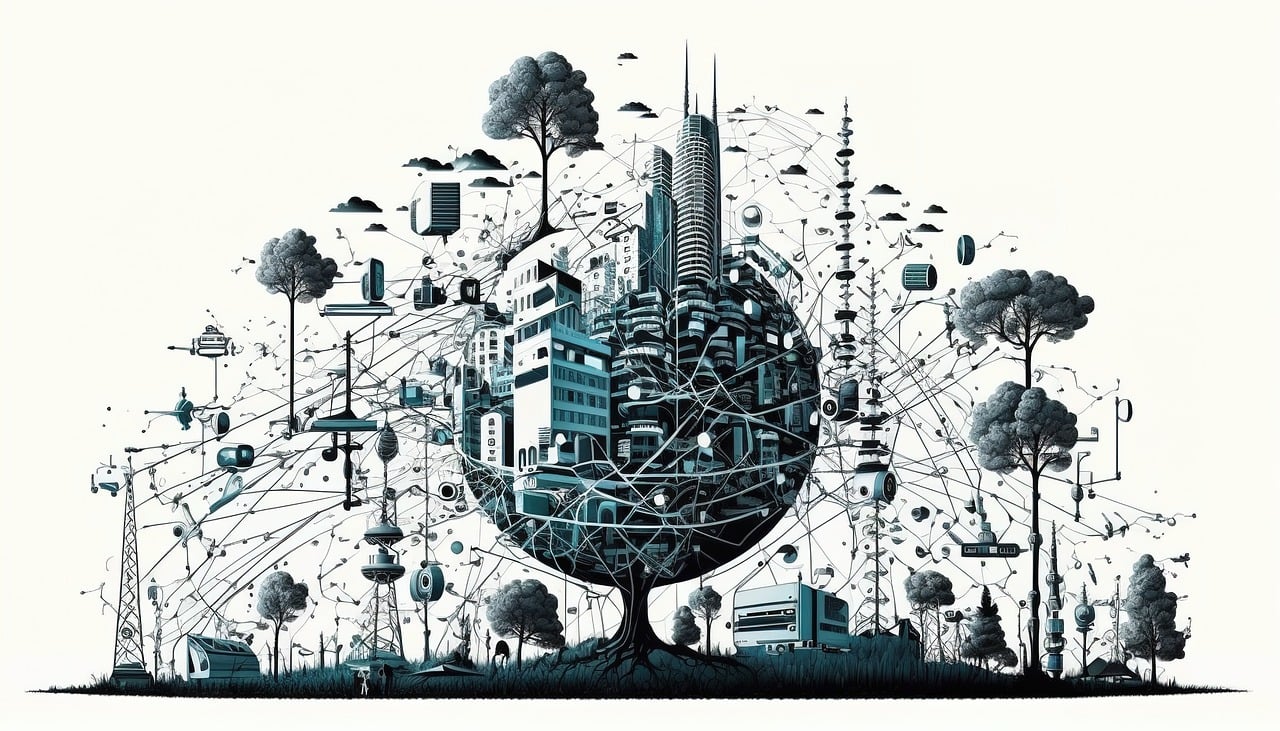The Spread of the Internet of Things (IoT)
The Internet of Things (IoT) is revolutionizing the way we live and work by connecting everyday objects to the internet, enabling them to collect and exchange data. This technological advancement is creating a more interconnected and intelligent world, transforming industries, enhancing efficiencies, and improving quality of life.
Growth and Expansion of IoT
1. Proliferation of Smart Devices
- Consumer Electronics: Smart home devices such as thermostats, lights, refrigerators, and security systems are becoming common, allowing users to control their homes remotely.
- Wearables: Fitness trackers, smartwatches, and health monitoring devices are increasingly popular, helping individuals monitor their health and fitness in real-time.
2. Industrial and Enterprise Applications
- Manufacturing: IoT is integral to Industry 4.0, with smart factories using connected machinery and sensors to optimize production processes, predict maintenance needs, and reduce downtime.
- Supply Chain Management: IoT devices track goods in real-time, improving inventory management, reducing losses, and enhancing the efficiency of supply chains.
3. Smart Cities and Infrastructure
- Urban Planning: IoT is being used to develop smart cities, with applications in traffic management, waste management, energy distribution, and public safety.
- Utilities: Smart grids, water management systems, and environmental monitoring devices help in the efficient distribution and conservation of resources.
Key Drivers of IoT Growth
1. Advancements in Connectivity
- 5G Networks: The rollout of 5G technology is providing faster, more reliable internet connections, enabling the seamless operation of a vast number of IoT devices.
- Improved Sensors: Enhanced sensor technology allows for more accurate data collection and analysis, driving the effectiveness of IoT applications.
2. Data Analytics and AI Integration
- Big Data: The immense volume of data generated by IoT devices can be analyzed to gain valuable insights, optimize operations, and drive decision-making.
- Artificial Intelligence: AI algorithms can process IoT data in real-time, enabling predictive analytics, automation, and smarter responses to various conditions.
3. Cost Reduction
- Decreasing Hardware Costs: The cost of sensors, processors, and connectivity has decreased, making IoT solutions more affordable for businesses and consumers.
- Cloud Computing: Cloud services provide scalable storage and computing power, reducing the need for expensive on-premises infrastructure.
Challenges and Considerations
1. Security and Privacy
- Cybersecurity Risks: The widespread use of IoT devices increases the potential attack surface for cybercriminals, necessitating robust security measures.
- Data Privacy: Ensuring the privacy of data collected by IoT devices is crucial, particularly in applications involving personal information.
2. Interoperability
- Standards and Protocols: The lack of standardized protocols can hinder the integration and interoperability of IoT devices from different manufacturers.
3. Scalability
- Infrastructure Requirements: Supporting a large number of connected devices requires scalable network infrastructure and efficient management systems.
Future Outlook
1. Enhanced Integration and Automation
- IoT will continue to integrate with other emerging technologies such as AI, blockchain, and edge computing, creating more autonomous and intelligent systems.
2. Expansion into New Sectors
- Healthcare: IoT will play a crucial role in telemedicine, remote patient monitoring, and smart medical devices.
- Agriculture: Smart farming technologies will improve crop management, livestock monitoring, and resource utilization.
3. Sustainability and Environmental Impact
- IoT solutions will contribute to sustainability efforts by optimizing energy use, reducing waste, and enabling smarter resource management.
Conclusion
The spread of the Internet of Things is rapidly transforming the world, driving innovation, and enhancing connectivity across various sectors. As IoT technology continues to evolve, it will unlock new opportunities, address critical challenges, and pave the way for a smarter, more connected future.
Share this content:

